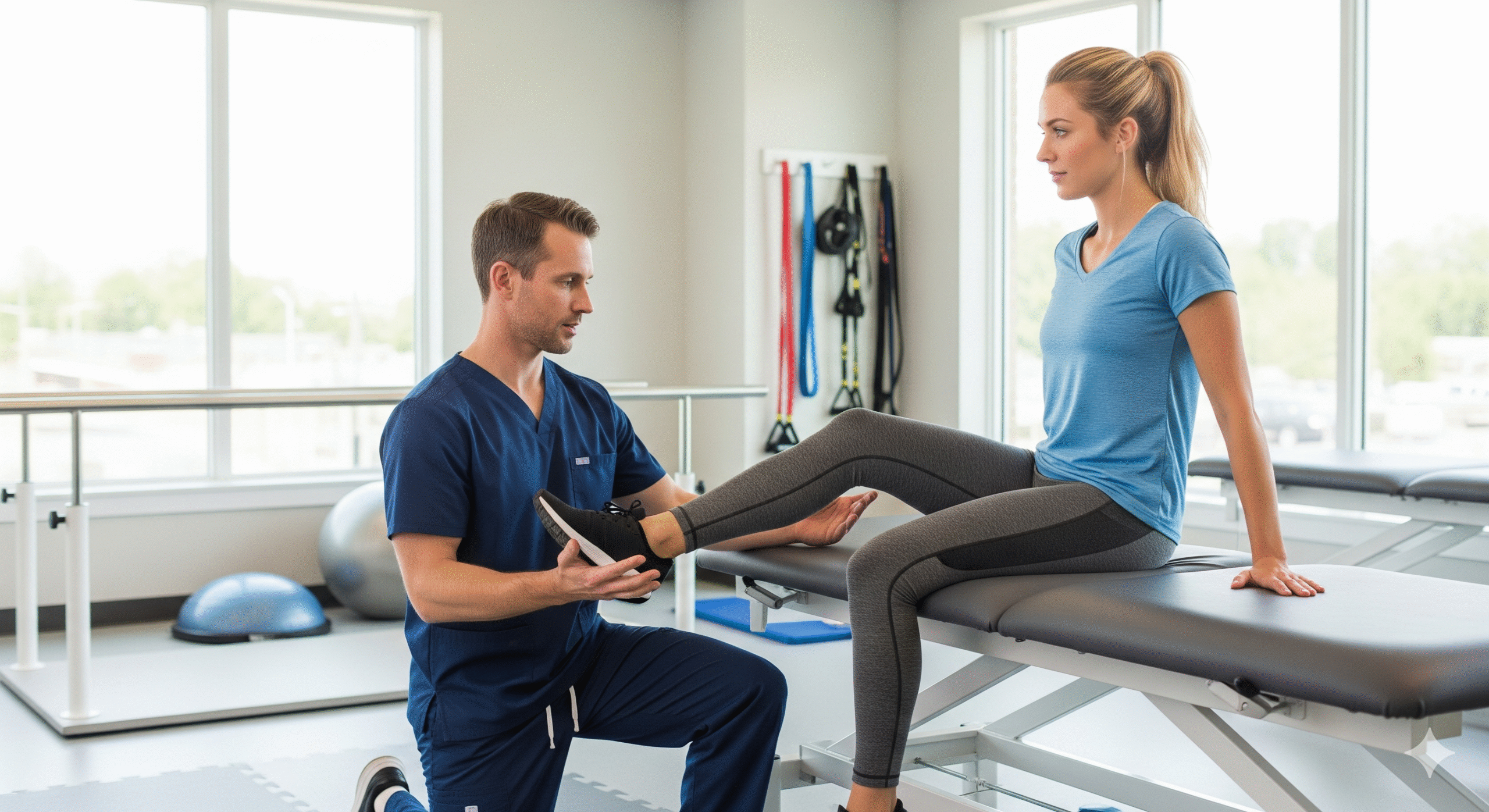Recovering From Sports Injuries With Modern Rehab Methods
Sports injuries are a common reality for athletes and fitness enthusiasts. Whether it’s a sprained ankle, torn ligament, or muscle strain, injuries can disrupt not only your training routine but also your overall quality of life.
The good news? Thanks to modern rehabilitation methods, recovery times are shorter, outcomes are better, and athletes can return to peak performance much faster than before.
In this post, we’ll explore the most effective modern rehab methods, practical recovery tips, and expert-backed strategies to help you bounce back stronger after a sports injury.
Why Fast and Proper Recovery Matters
Recovering quickly isn’t just about returning to play—it’s about healing the right way to avoid long-term damage.
- Prevents chronic pain and recurring injuries
- Helps regain strength, mobility, and flexibility
- Improves mental well-being after injury setbacks
- Supports a faster return to training or competition
👉 Skipping or rushing rehab often leads to re-injury, which can keep you sidelined for months—or even permanently.
Modern Rehab Methods for Faster Recovery
1. Physical Therapy (PT)

The cornerstone of sports injury recovery, physical therapy involves guided exercises to restore movement and strength.
- Customized plans based on your injury
- Focuses on mobility, stability, and pain reduction
- Prevents muscle imbalances
💡 Tip: Always work with a licensed physical therapist who understands sports injuries.
2. Cold Laser Therapy (Low-Level Laser Therapy)
A cutting-edge treatment where low-intensity lasers stimulate healing at the cellular level.
- Reduces inflammation and pain
- Accelerates tissue repair
- Safe and non-invasive
✅ Popular for treating tendonitis, sprains, and joint injuries.
3. Hydrotherapy (Water-Based Rehab)

Rehabilitation exercises performed in water provide resistance while reducing stress on joints.
- Ideal for knee, hip, and ankle injuries
- Improves strength without overloading healing tissues
- Relieves pain through buoyancy
🏊 Great for athletes recovering from ACL surgery or joint injuries.
4. Cryotherapy (Cold Therapy Chambers)
Immersing the body in extremely cold temperatures for 2–4 minutes helps with inflammation and soreness.

- Reduces swelling and speeds muscle recovery
- Boosts circulation and healing response
- Shorter recovery times for overuse injuries
⚡ Many professional athletes swear by cryotherapy sessions.
5. Platelet-Rich Plasma (PRP) Injections
PRP therapy uses a patient’s own blood platelets to promote healing.
- Speeds up recovery of tendons, ligaments, and muscles
- Minimally invasive alternative to surgery
- Growing in popularity among athletes
6. Shockwave Therapy
This non-invasive treatment uses sound waves to stimulate blood flow and tissue repair.
- Breaks down scar tissue
- Encourages natural healing
- Effective for chronic injuries like plantar fasciitis
7. Electrical Stimulation (E-Stim)
Electrical impulses stimulate muscles to improve strength and reduce pain.
- Useful in early recovery stages
- Prevents muscle atrophy
- Enhances circulation
8. Regenerative Medicine Approaches
Emerging treatments such as stem cell therapy are showing promise in healing sports injuries.
- Potential for repairing cartilage and joint damage
- May reduce need for invasive surgery
- Still under study but highly promising
Fitness Equipment Financing: Smart Options to Stay Healthy on a Budget
At-Home Recovery Tips
Alongside professional rehab, self-care at home plays a crucial role:
- R.I.C.E. Method: Rest, Ice, Compression, Elevation
- Nutrition: Eat protein-rich and anti-inflammatory foods
- Sleep: Aim for 7–9 hours for optimal healing
- Stretching: Gentle, guided stretches aid mobility
- Consistency: Stick to prescribed rehab routines
Common Mistakes to Avoid During Recovery
- Returning to sports too soon
- Ignoring professional guidance
- Over-relying on painkillers instead of proper therapy
- Skipping warm-ups and cool-downs after healing
- Neglecting mental health support during downtime
Mental Health and Sports Injury Recovery
Sports injuries can take a toll emotionally. Frustration, anxiety, and even depression are common.
- Practice mindfulness and meditation
- Set small, achievable goals
- Stay connected with teammates and coaches
- Seek professional support if needed
Remember, recovery is a holistic process—your mind heals along with your body.
Conclusion
Recovering from a sports injury requires patience, consistency, and the right rehab methods. Modern techniques like cold laser therapy, hydrotherapy, cryotherapy, and PRP injections are revolutionizing recovery, helping athletes return stronger and faster.
By combining professional treatment with smart at-home care, you’ll not only speed up healing but also reduce your risk of re-injury.
💪 Take rehab seriously—because investing in proper recovery today ensures a healthier, stronger tomorrow.
FAQs: Recovering From Sports Injuries
1. How long does it take to recover from a sports injury?
It depends on the severity. Minor sprains may take 2–4 weeks, while major injuries (like ACL tears) may take 6–12 months.
2. Is cryotherapy safe for all athletes?
Yes, but those with heart conditions or cold sensitivity should consult a doctor first.
3. Can nutrition really speed up recovery?
Absolutely. Foods rich in protein, omega-3s, and antioxidants support tissue repair and reduce inflammation.
4. Should I exercise during injury recovery?
Yes, but only with professional guidance. Modified exercises can maintain strength without worsening the injury.
5. Do modern rehab methods replace physical therapy?
No, they complement physical therapy. PT remains the foundation of safe recovery.
External Resources
- American Physical Therapy Association (APTA) – Professional PT guidance
- National Institutes of Health (NIH) – Research on regenerative rehab methods
- Mayo Clinic – Sports Medicine – Expert insights on sports injuries
